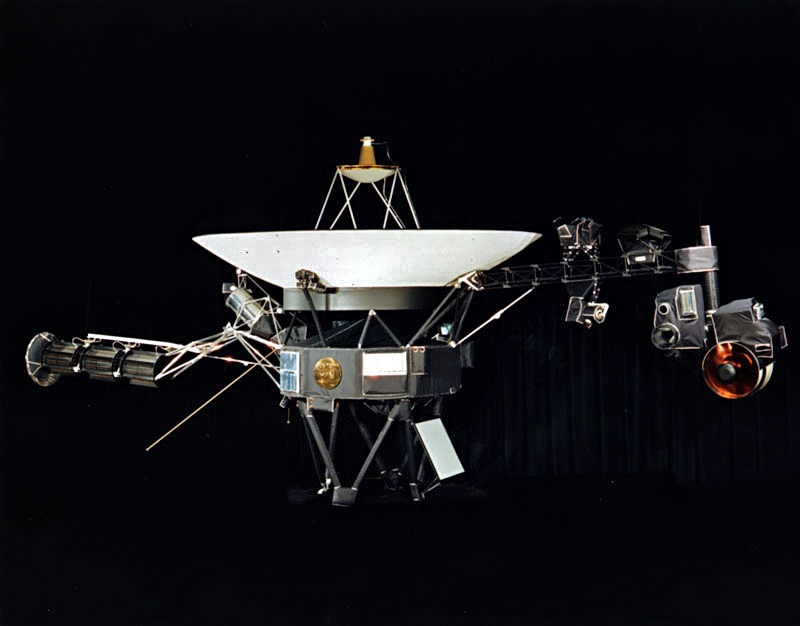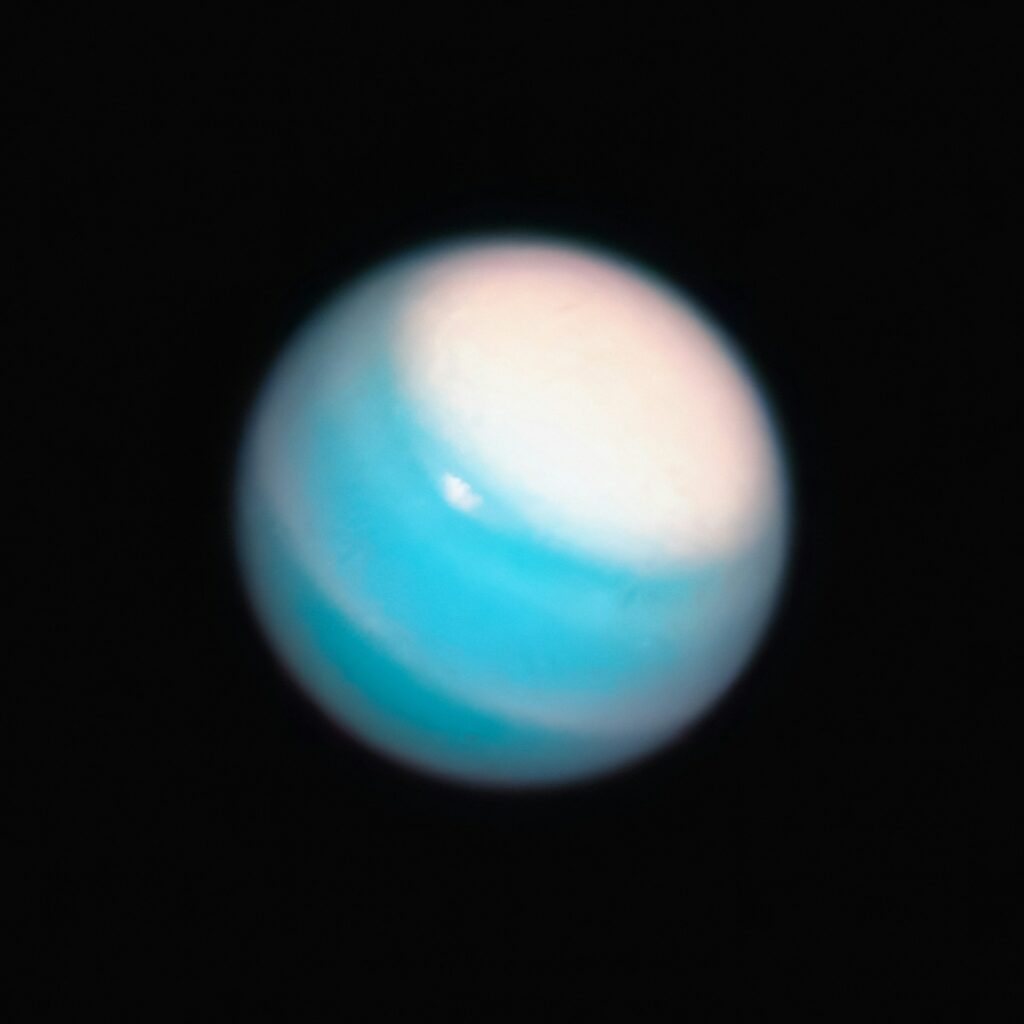A recent study in Nature Astronomy suggests that NASA’s Voyager 2 spacecraft encountered Uranus during a rare solar wind event in 1986, potentially altering scientists’ understanding of the ice giant’s magnetosphere by compressing it into an atypical state and challenging long-held assumptions about its magnetic environment.
Voyager 2 Flyby Anomaly
The Voyager 2 flyby of Uranus in 1986 occurred during a rare solar wind event that dramatically altered the planet’s magnetosphere, leading to potentially misleading observations. This cosmic coincidence compressed Uranus’ magnetic field, creating conditions that only occur about 4% of the time. The solar wind event, which happened just days before the spacecraft’s arrival, squashed the planet’s magnetosphere, making it appear significantly different from its typical state.

Key implications of this anomalous flyby include:
- The magnetosphere appeared to lack plasma, a common feature in other planets’ magnetic environments.
- Unusually intense belts of highly energetic electrons were observed.
- The magnetic field seemed unusually oblique and off-centered.
- These observations contradicted scientists’ understanding of planetary magnetic fields and particle radiation.
This “freak moment in time,” as described by Dr. Jamie Jasinski of NASA’s Jet Propulsion Laboratory, highlights the importance of considering space weather events when interpreting data from brief planetary encounters.
Uranus Magnetosphere Findings
The reanalysis of Voyager 2 data has revealed surprising insights into Uranus’s magnetosphere, challenging long-held assumptions about the ice giant’s magnetic environment. Scientists now believe that the planet’s magnetosphere is likely much larger than previously thought, with the moons Titania and Oberon potentially residing within its boundaries. This expanded magnetosphere could have significant implications for future exploration, particularly in the search for subsurface oceans on Uranian moons.

The study also suggests that Uranus’s magnetic field may be more dynamic than initially believed. The compressed state observed during the flyby likely pushed plasma out of the system while intensifying the radiation belts. This indicates that Uranus’s magnetosphere might be more similar to those of other gas giants, fluctuating in response to solar wind conditions. These findings highlight the importance of long-term observations and multiple encounters to accurately characterize planetary magnetic environments, especially for distant and infrequently visited worlds like Uranus.
Scientific Implications for Uranus
The unexpected findings from the Voyager 2 flyby have significant implications for future Uranus exploration and our understanding of ice giants. These discoveries could inform mission planning, potentially making it easier to search for subsurface oceans on Uranian moons. The compressed magnetosphere observed during the flyby likely pushed plasma out of the system while intensifying radiation belts, suggesting that Uranus’s magnetic environment might be more similar to other gas giants than previously thought. This revelation emphasizes the importance of long-term observations rather than relying on single encounters for understanding complex planetary systems. Future missions to Uranus will need to account for the planet’s dynamic magnetosphere, which appears to expand and contract in response to solar wind conditions, much like Earth’s.
Reassessing Uranus Understanding
The revelation of Uranus’s anomalous state during the Voyager 2 flyby necessitates a comprehensive reassessment of our understanding of the ice giant. Scientists now recognize that the planet’s unique characteristics, such as its tilted magnetic field and rotation axis, may have contributed to the misinterpretation of the flyby data. This realization underscores the importance of contextualizing brief planetary encounters within broader space weather patterns.
The study’s findings have prompted researchers to reconsider Uranus’s place in comparative planetology. The planet’s magnetosphere may be more Earth-like than previously thought, expanding and contracting in response to solar wind conditions.
This dynamic behavior could have significant implications for understanding the evolution and characteristics of ice giants, both in our solar system and among exoplanets. As a result, future missions to Uranus will need to account for these potential variations, emphasizing the need for extended observation periods to capture a more accurate representation of the planet’s typical state.
Sources :
https://thedebrief.org/new-clues-from-voyager-2-reveal-uranus-may-be-more-mysterious-than-originally-thought/
https://www.sci.news/space/voyager-2-flyby-uranus-solar-wind-event-13412.html
https://keyt.com/news/national-world/cnn-other/2024/11/11/a-rare-event-during-1986-uranus-flyby-may-have-skewed-the-way-scientists-understand-the-planet-study-finds/
https://www.sciencenews.org/article/uranus-weird-look-voyager-2-flyby
https://www.iflscience.com/weve-only-been-to-uranus-once-and-the-freak-timing-may-have-misled-us-for-years-76747
Cover photo from NASA Hubble Space Telescope on Unsplash
